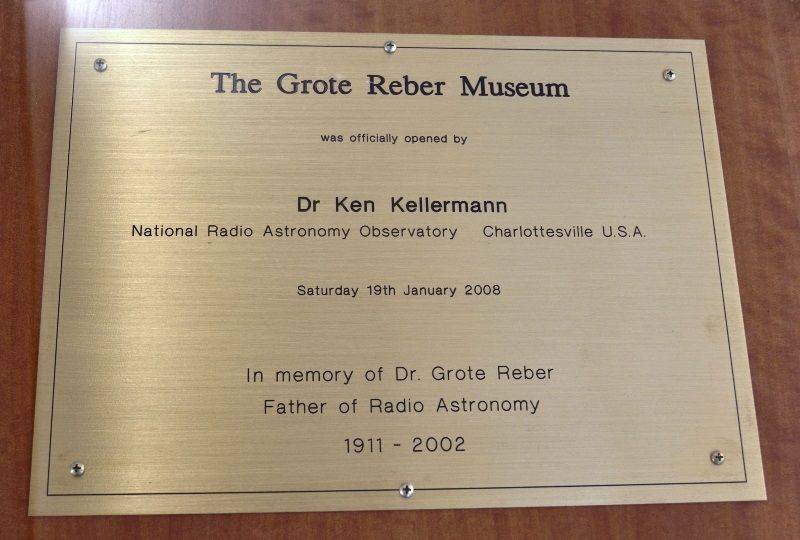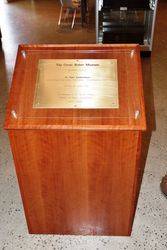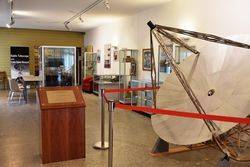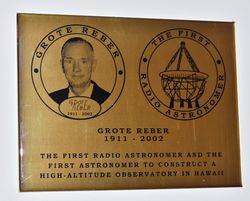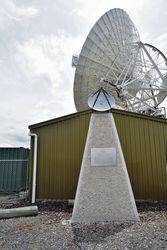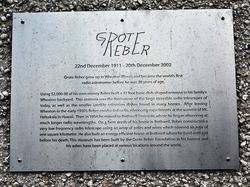
Grote ReberPrint Page 
The Grote Reber Museum commemorates Grote Reber ( 1911 -2002), an American pioneer of radio astronomy, being the first person to build a "big dish" antenna for the purpose of mapping the sky at radio frequencies. He discovered many discrete radio sources, and he mapped the band of bright radio emission from the Milky Way Galaxy.
Reber came to Tasmania in the late 1950`s because of its unique location at high magnetic latitude in the southern hemisphere. He spent 40 years studying low frequency emissions with telescopes he built himself, first in partnership with the University of Tasmania School of Physics, and later on his own at Bothwell. His accomplishments are remarkable, not only in radio astronomy but also in electrical powered transport, in carbon dating of aboriginal settlements, and in the patterns made by growing bean plants.
The radio observatory has been operating for more than 20 years, with its distinctive 26m diameter radio ""dish"". The museum has exhibits that show Reber's telescopes, his life's work, and his many other interests. A unique feature is Reber's original radio shack, the control building for the radio telescope array at Bothwell, which is installed at the Museum with Reber's original radio equipment in place.
Location
| Address: | 200 Denholms Road, The Grote Reber Museum, Cambridge, 7170 |
|---|---|
| State: | TAS |
| Area: | AUS |
| GPS Coordinates: | Lat: -42.803889 Long: 147.440852 Note: GPS Coordinates are approximate. |
Details
| Monument Type: | Structure |
|---|---|
| Monument Theme: | People |
| Sub-Theme: | Science |
Dedication
| Actual Monument Dedication Date: | Saturday 19th January, 2008 |
|---|
THE
GROTE REBER
MUSEUM
Plaque :
The Grote Reber Museum
was officially opened by
Dr Ken Kellermann
National Radio Astronomy Observatory Charlottsville U.S.A.
Saturday 19th January 2008
In memory of Dr. Grote Reber
Father of Radio Astronomy
1911 - 2002


